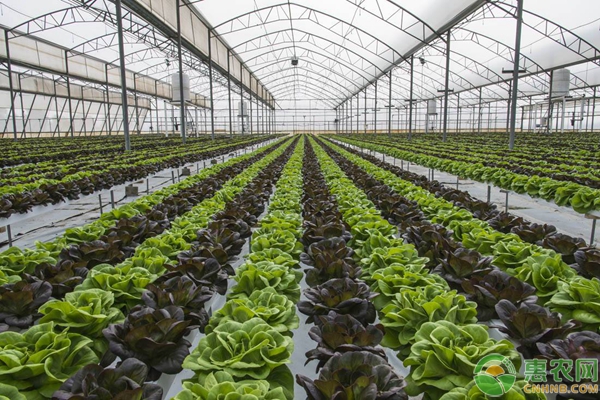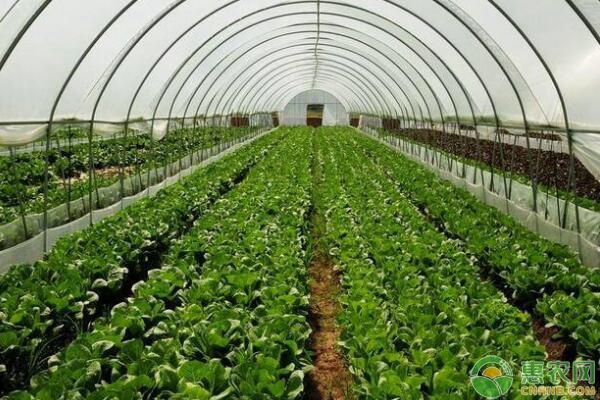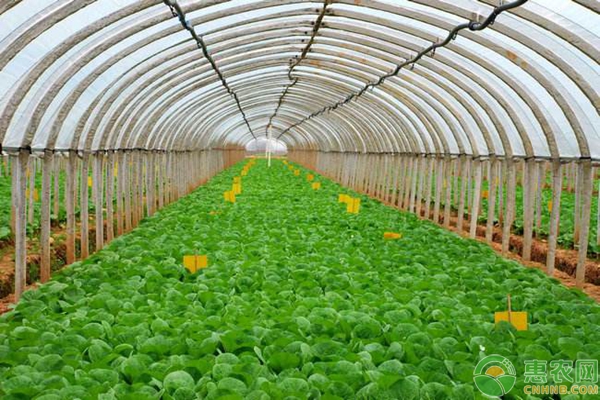5 organic prevention and control measures for vegetable diseases in greenhouses (recommended collection!)
Nowadays, greenhouse vegetable cultivation technology is getting more and more perfect, but there are still many greenhouse vegetable growers who have more headaches for greenhouse vegetable diseases. Indeed, consumers are now demanding higher quality of vegetables, and vegetables that use a lot of pesticides are not healthy enough for people to eat. Then, how to prevent and cure the diseases of greenhouse vegetables? The following is a small series of Huinong. We talk about the organic prevention and control technology of vegetable diseases in greenhouses, so that vegetables can achieve high quality, high yield and safety.

First, seed disinfection
Many infectious diseases of greenhouse vegetables are spread by seeds. The method of disinfection of hot water is simple, economical, easy to promote, and has good disease prevention effect. However, water temperature must be strictly controlled, and it is not possible to burn the embryos. The pathogens carried by the seeds must be killed.
1, the operation steps
The first is pre-dip, the vegetable seeds are packed into nylon mesh bags, the amount of seeds in the bags is controlled to about one-third, and then placed in warm water to soak and rinse. Then burn the seed, turn the boiling water into the circle and slowly pour it in, and continue to stir with the seed bag. After the water temperature reaches the water temperature of the hot seeding, stop adding water. During the specified hot-blowing time, the temperature drops immediately and the water is added.
2, pre-dip
1. Activate the pathogens on the seeds to kill them;
2. Wash off the substance that inhibits germination on the epidermis of the seed;
3. Trip the hair on the seeds (such as tomatoes) to prevent uneven temperature during hot stamping.
3, hot seed
1. The temperature of water should generally be 48 ~ 53 ° C;
2. The hot pressing time is generally 15 ~ 25min;
3. Constantly stir and keep constant temperature.
4, matters needing attention
1. The seed coat is thin or Chen seeds, the temperature of the hot seed should be low, and the time should be short; conversely, if the seed coat is thick or new, the water temperature of the hot seed should be high and the time should be long.
2. The water temperature can be floated up and down by 2 °C during hot pressing, and the water temperature is kept within this range for a specified period of time.
3. After the predetermined scalding time is reached, stop adding water, continue to stir, lower the water temperature to 35 ° C, or take the seeds out and put them in water at 35 ° C.

Second, soil disinfection
Many infective diseases of vegetables are transmitted by soil bacteria, so soil disinfection is effective in controlling soil-borne vegetables.
1. Deeply turning the soil in autumn
After the autumn harvest, the soil is turned 35 to 40 cm deep. The effect is:
1. The low temperature in winter and the ultraviolet rays of the sun can kill some soil-borne bacteria;
2. The pests or eggs that have been hidden in the deep soil for winter are turned to the soil surface, or they are frozen or eaten by birds.
2, Futian high temperature fermentation disinfection method
This method can be used for disinfection of seedling bed soil and disinfection of organic fertilizer. The soil piled up by this method can be used for old soil or other field soil without herbicide residues; the grass can be used for grass turf or dried weeds or cut crop straws; the manure is livestock manure or large-scale farming. Livestock manure.
At the beginning of July each year, an open space is prepared in the field or in the ground. The soil, grass and manure are layered according to the thickness of 15~20cm. The shape of the pile is round or long, and the height is generally about 2m. After the pile is finished, use a slap on the outside and apply a layer of mud. Make a long strip on the top of the mound, then pour in the thick dung or water. After the mound is fully wet, cover the mound with plastic sheeting and press the plastic around the soil. In the sky, the sun shines during the daytime, and the fermented heat of the manure, together with the airtightness of the plastic cloth, can make the temperature inside the mound up to 70 °C, which can completely kill the soil-borne bacteria, eggs and grass seeds. . Open the plastic sheet before the autumn, and spread the soil with a two-toothed hook. If the soil for nursery is sifted, it can be used for later use.
3. Damp heat disinfection of cultivated soil
After the spring rafts are shed, the plants are evenly distributed per acre: weeds, farmyard manure, and microbial fertilizers after cutting. Then spin the plough, put the water into the field, seal the shed, and shack for about 30 days. By watering the fields, not only can the pathogenic microorganisms in the soil be released from dormancy, they are easily killed at high temperatures, and most of the salt in the soil can be removed to avoid soil salinization. Through the fermentation of farmyard manure, the plastic film is covered by the ground, the shed film vents are closed, and the sunny weather is used to greatly increase the temperature of the surface soil and effectively kill the pathogenic bacteria in the soil.
4. Hot water disinfection in nursery bed soil
In the early spring seedlings, the bottom water used before sowing must be boiled. This is because on the one hand, boiling water can increase the temperature of the soil in the nursery bed, so that the seedlings can be unearthed normally and are healthy and disease-free; on the other hand, boiled water can directly kill soil-borne bacteria and pests in the soil.

Third, grafting seedlings
Vegetable cultivation in greenhouses is often inevitable, but continuous cropping will inevitably lead to continuous cropping obstacles, resulting in problems such as reduced yield, poor quality, and serious pests and diseases. In order to break the barrier of continuous cropping in greenhouse, the method of grafting and seedling can be adopted, and the cost is low and the effect is good.
The main points of grafting seedlings are as follows: the rootstock adopting the plugging method and the scion adopting the docking method should be planted for several days; the second is that the grafted seedlings should be shaded, kept warm for more than 3 days, and gradually remove the sunshade and gradually descend. wet.
Fourth, reduce the indoor air humidity in the shed
The greenhouse vegetables should be ventilated especially in the early spring according to the weather conditions and the growth of the seedlings. The main purpose is to reduce the humidity and prevent disease. A small amount of ventilation should be used in cloudy, rainy, and snowy days, but the temperature should be 5 °C lower than normal. After sunset, until the darkness, re-discharge the small air vents and ventilate. Before the sunrise in the morning, before the sunrise, first open the small air vents to ventilate, then close the air vents. On the day of greenhouse vegetable irrigation, the warming and dehumidification method should be adopted: that is, the shed will not be ventilated in the morning. When the temperature reaches 32 °C, the mouth will be opened immediately. When the temperature drops to 25 °C, the tuyere will be closed immediately, when the temperature reaches 32 °C. And immediately open the mouth to release the wind, the same day the irrigation is repeated several times.
Fifth, clean the garden in time
In the middle and late stages of greenhouse vegetable production, due to the aging of the plants and the infection of various pests and diseases, it is necessary to promptly remove the diseased plants and the diseased leaves and diseased fruits on the lighter plants for ventilation. If necessary, the bottom leaves should be laid regularly, and then the cleared leaves should be deeply buried. After each clean-up, medication should be taken promptly to prevent the bacteria from invading from the wound. All plant bodies, after harvesting vegetables in each shed, must be thoroughly removed in time and green, which can reduce the source of pests and diseases.
The above is the detailed explanation of the organic prevention and control technology for greenhouse vegetable diseases organized by Huinong. The organic prevention and control of greenhouse vegetables is familiar to every greenhouse vegetable grower. As people's awareness of food health continues to improve Organic vegetables are expected to become the trend of future vegetable cultivation.
Bone Glue,Bone Glue Gelatin,Animal Bone Glue,Industrial Grade Bone Glue
Hebei Haodong Biological Technology Co.,Ltd. , https://www.hdgelatin.com